Target Information
| Target General Information | Top | |||||
|---|---|---|---|---|---|---|
| Target ID |
T86731
(Former ID: TTDR00214)
|
|||||
| Target Name |
Sodium pump alpha-2 (ATP1A2)
|
|||||
| Synonyms |
Sodium/potassium-transporting ATPase subunit alpha-2; Sodium/potassium-transporting ATPase alpha2; Sodium pump 2; Na+/K+ ATPase 2; Na(+)/K(+) ATPase alpha-2 subunit; KIAA0778; Alpha(+)Sodium/potassium-transporting ATPase alpha-2 chain
Click to Show/Hide
|
|||||
| Gene Name |
ATP1A2
|
|||||
| Target Type |
Literature-reported target
|
[1] | ||||
| Function |
This is the catalytic component of the active enzyme, which catalyzes the hydrolysis of ATP coupled with the exchange of sodium and potassium ions across the plasma membrane. This action creates the electrochemical gradient of sodium and potassium, providing the energy for active transport of various nutrients.
Click to Show/Hide
|
|||||
| BioChemical Class |
Cation transporting ATPase
|
|||||
| UniProt ID | ||||||
| EC Number |
EC 7.2.2.13
|
|||||
| Sequence |
MGRGAGREYSPAATTAENGGGKKKQKEKELDELKKEVAMDDHKLSLDELGRKYQVDLSKG
LTNQRAQDVLARDGPNALTPPPTTPEWVKFCRQLFGGFSILLWIGAILCFLAYGIQAAME DEPSNDNLYLGVVLAAVVIVTGCFSYYQEAKSSKIMDSFKNMVPQQALVIREGEKMQINA EEVVVGDLVEVKGGDRVPADLRIISSHGCKVDNSSLTGESEPQTRSPEFTHENPLETRNI CFFSTNCVEGTARGIVIATGDRTVMGRIATLASGLEVGRTPIAMEIEHFIQLITGVAVFL GVSFFVLSLILGYSWLEAVIFLIGIIVANVPEGLLATVTVCLTLTAKRMARKNCLVKNLE AVETLGSTSTICSDKTGTLTQNRMTVAHMWFDNQIHEADTTEDQSGATFDKRSPTWTALS RIAGLCNRAVFKAGQENISVSKRDTAGDASESALLKCIELSCGSVRKMRDRNPKVAEIPF NSTNKYQLSIHEREDSPQSHVLVMKGAPERILDRCSTILVQGKEIPLDKEMQDAFQNAYM ELGGLGERVLGFCQLNLPSGKFPRGFKFDTDELNFPTEKLCFVGLMSMIDPPRAAVPDAV GKCRSAGIKVIMVTGDHPITAKAIAKGVGIISEGNETVEDIAARLNIPMSQVNPREAKAC VVHGSDLKDMTSEQLDEILKNHTEIVFARTSPQQKLIIVEGCQRQGAIVAVTGDGVNDSP ALKKADIGIAMGISGSDVSKQAADMILLDDNFASIVTGVEEGRLIFDNLKKSIAYTLTSN IPEITPFLLFIIANIPLPLGTVTILCIDLGTDMVPAISLAYEAAESDIMKRQPRNSQTDK LVNERLISMAYGQIGMIQALGGFFTYFVILAENGFLPSRLLGIRLDWDDRTMNDLEDSYG QEWTYEQRKVVEFTCHTAFFASIVVVQWADLIICKTRRNSVFQQGMKNKILIFGLLEETA LAAFLSYCPGMGVALRMYPLKVTWWFCAFPYSLLIFIYDEVRKLILRRYPGGWVEKETYY Click to Show/Hide
|
|||||
| 3D Structure | Click to Show 3D Structure of This Target | AlphaFold | ||||
| Cell-based Target Expression Variations | Top | |||||
|---|---|---|---|---|---|---|
| Cell-based Target Expression Variations | ||||||
| Different Human System Profiles of Target | Top |
|---|---|
|
Human Similarity Proteins
of target is determined by comparing the sequence similarity of all human proteins with the target based on BLAST. The similarity proteins for a target are defined as the proteins with E-value < 0.005 and outside the protein families of the target.
A target that has fewer human similarity proteins outside its family is commonly regarded to possess a greater capacity to avoid undesired interactions and thus increase the possibility of finding successful drugs
(Brief Bioinform, 21: 649-662, 2020).
Human Tissue Distribution
of target is determined from a proteomics study that quantified more than 12,000 genes across 32 normal human tissues. Tissue Specificity (TS) score was used to define the enrichment of target across tissues.
The distribution of targets among different tissues or organs need to be taken into consideration when assessing the target druggability, as it is generally accepted that the wider the target distribution, the greater the concern over potential adverse effects
(Nat Rev Drug Discov, 20: 64-81, 2021).
Human Pathway Affiliation
of target is determined by the life-essential pathways provided on KEGG database. The target-affiliated pathways were defined based on the following two criteria (a) the pathways of the studied target should be life-essential for both healthy individuals and patients, and (b) the studied target should occupy an upstream position in the pathways and therefore had the ability to regulate biological function.
Targets involved in a fewer pathways have greater likelihood to be successfully developed, while those associated with more human pathways increase the chance of undesirable interferences with other human processes
(Pharmacol Rev, 58: 259-279, 2006).
Biological Network Descriptors
of target is determined based on a human protein-protein interactions (PPI) network consisting of 9,309 proteins and 52,713 PPIs, which were with a high confidence score of ≥ 0.95 collected from STRING database.
The network properties of targets based on protein-protein interactions (PPIs) have been widely adopted for the assessment of target’s druggability. Proteins with high node degree tend to have a high impact on network function through multiple interactions, while proteins with high betweenness centrality are regarded to be central for communication in interaction networks and regulate the flow of signaling information
(Front Pharmacol, 9, 1245, 2018;
Curr Opin Struct Biol. 44:134-142, 2017).
Human Similarity Proteins
Human Tissue Distribution
Human Pathway Affiliation
Biological Network Descriptors
|
|
|
There is no similarity protein (E value < 0.005) for this target
|
|
Note:
If a protein has TS (tissue specficity) scores at least in one tissue >= 2.5, this protein is called tissue-enriched (including tissue-enriched-but-not-specific and tissue-specific). In the plots, the vertical lines are at thresholds 2.5 and 4.
|
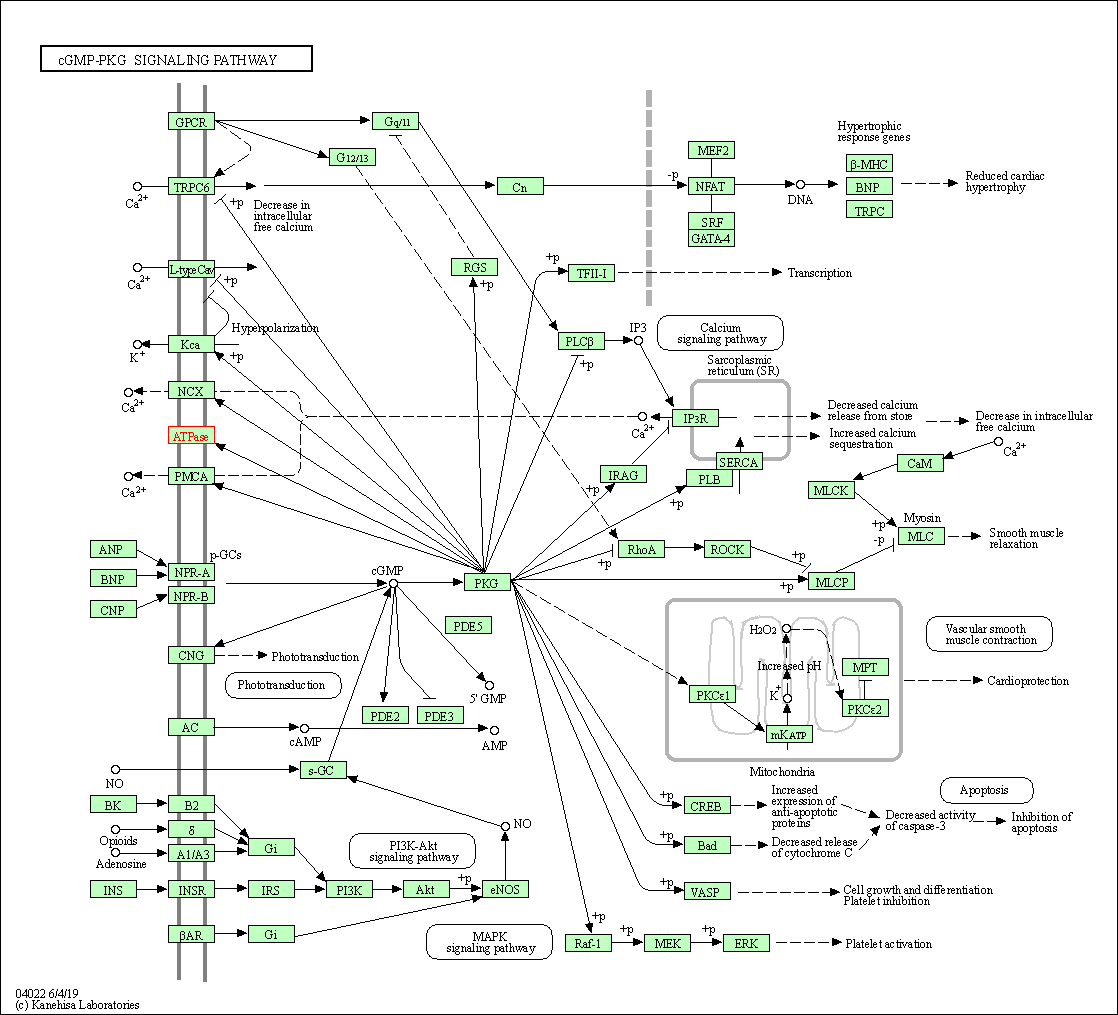
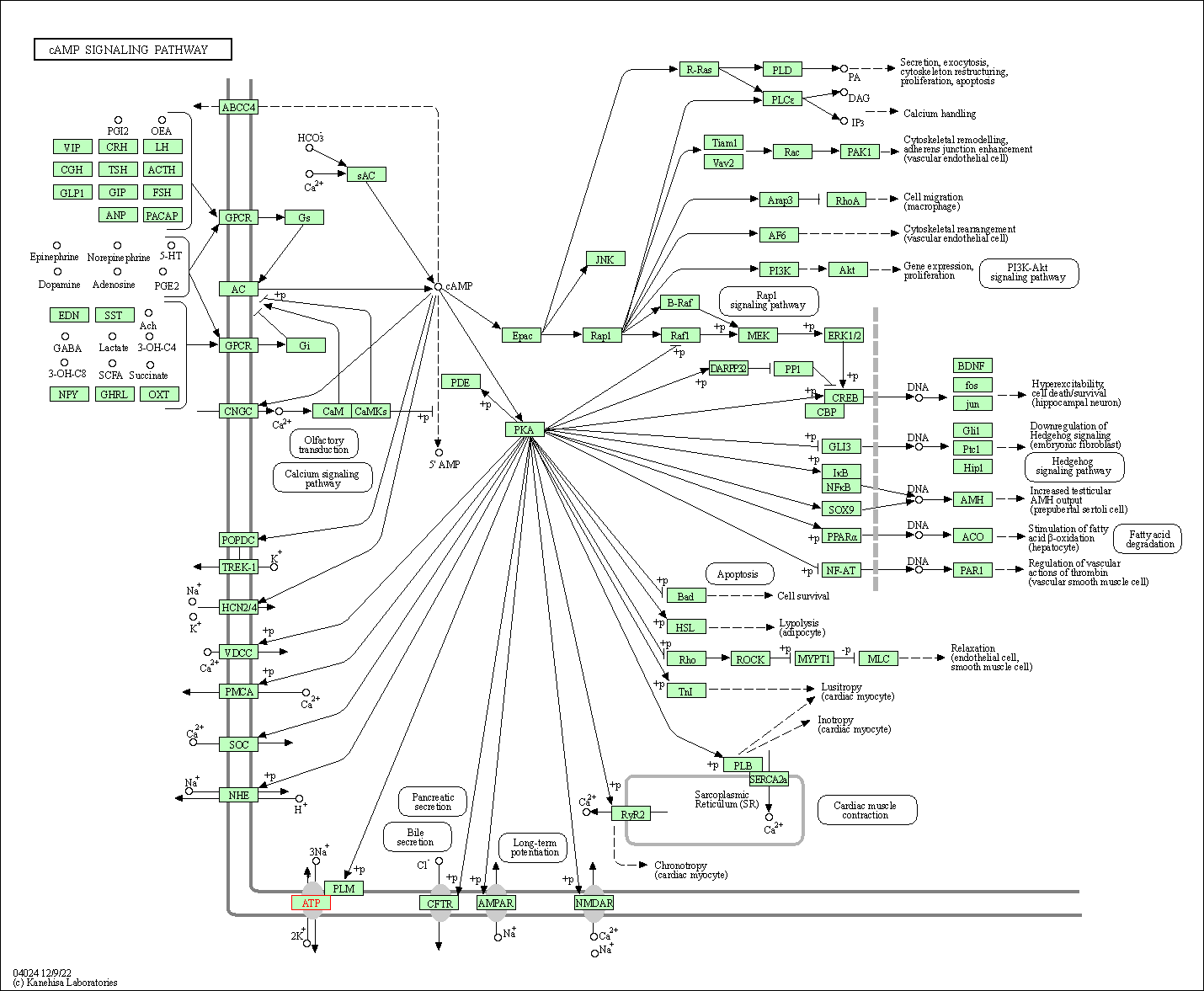
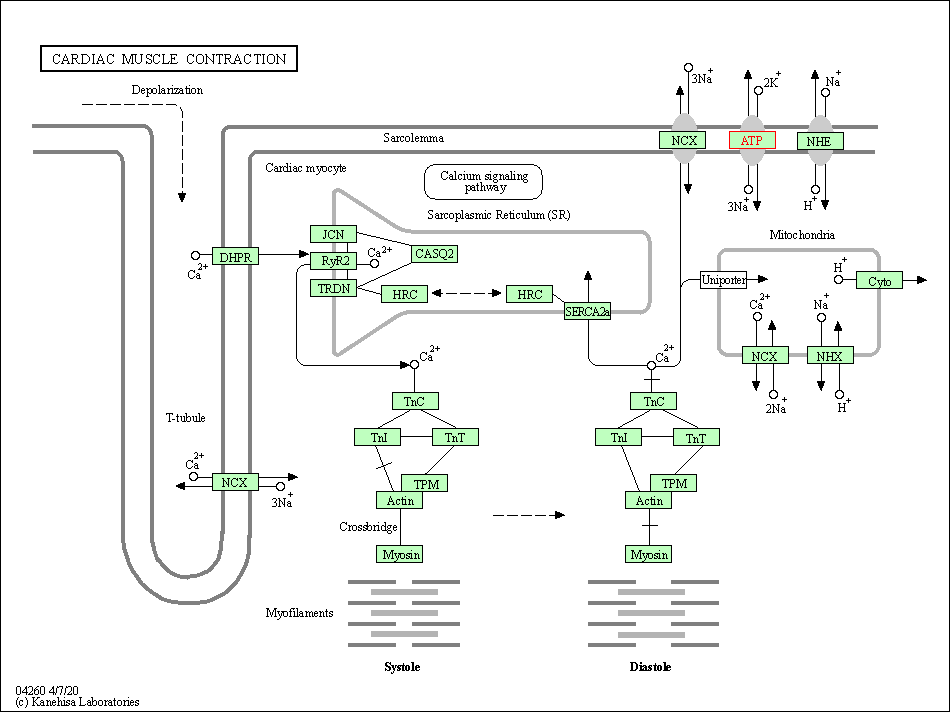
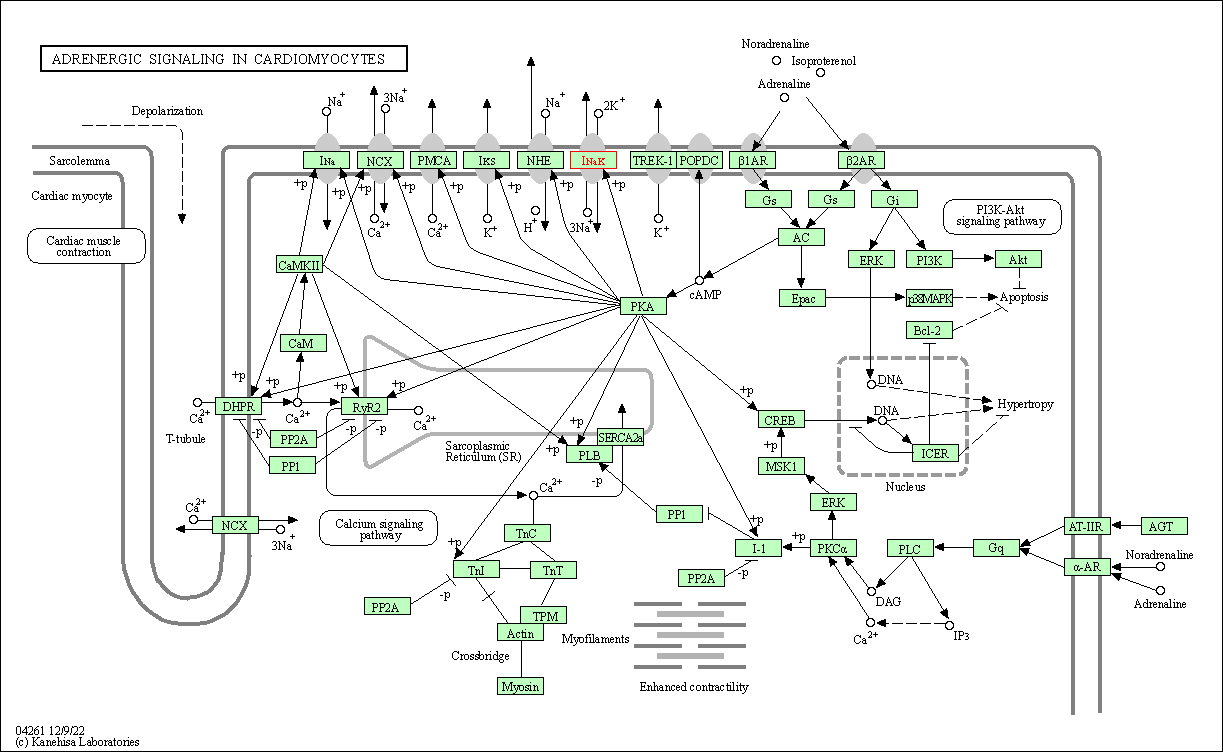
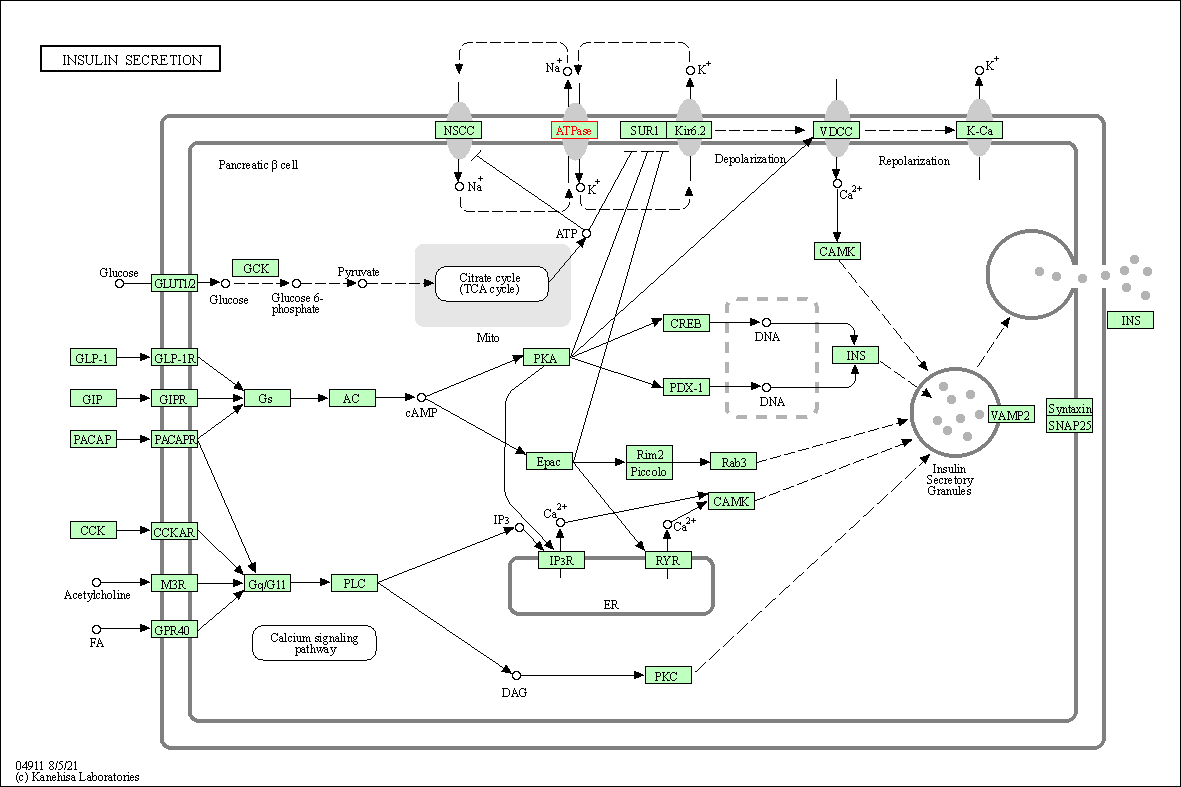
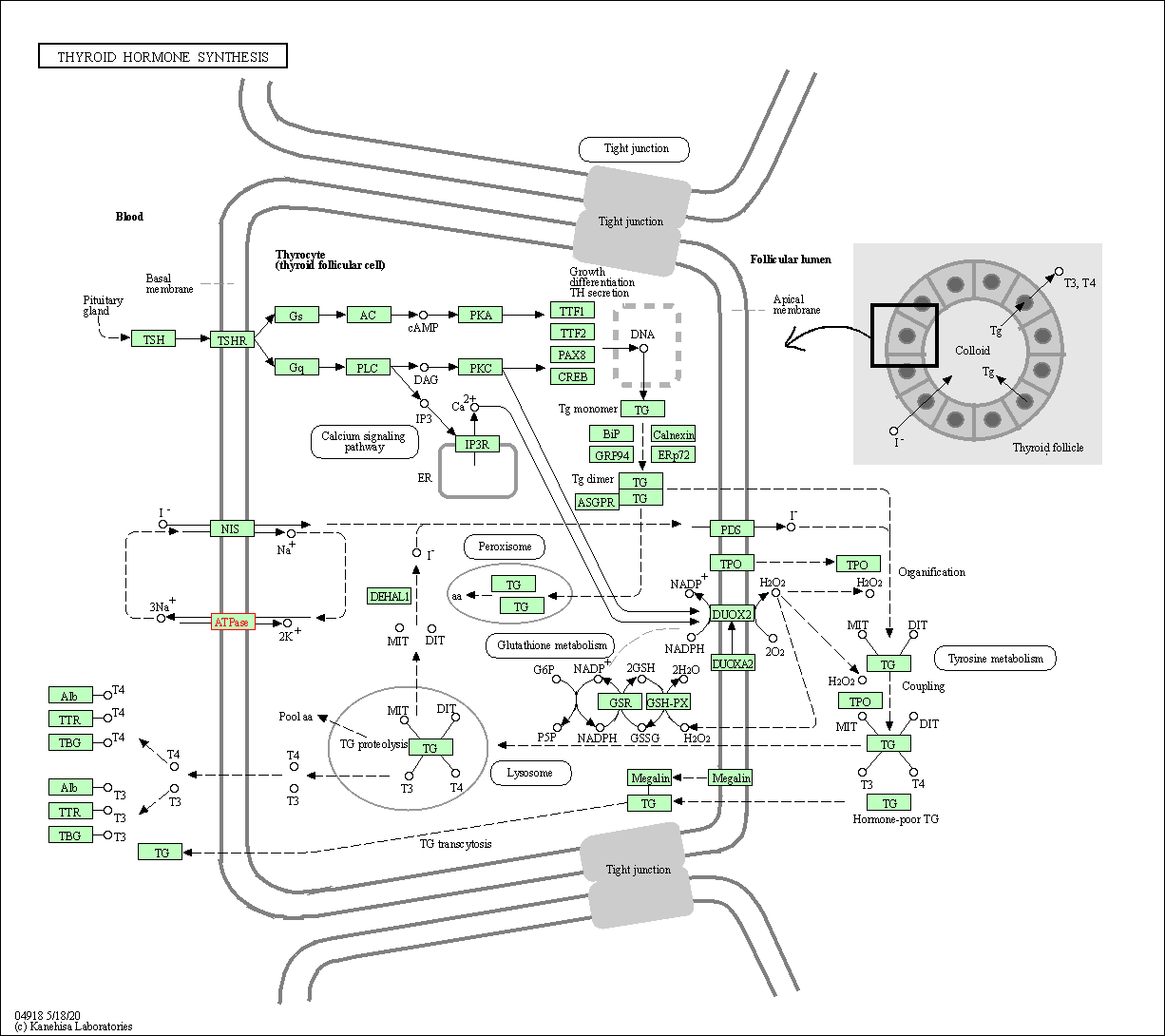
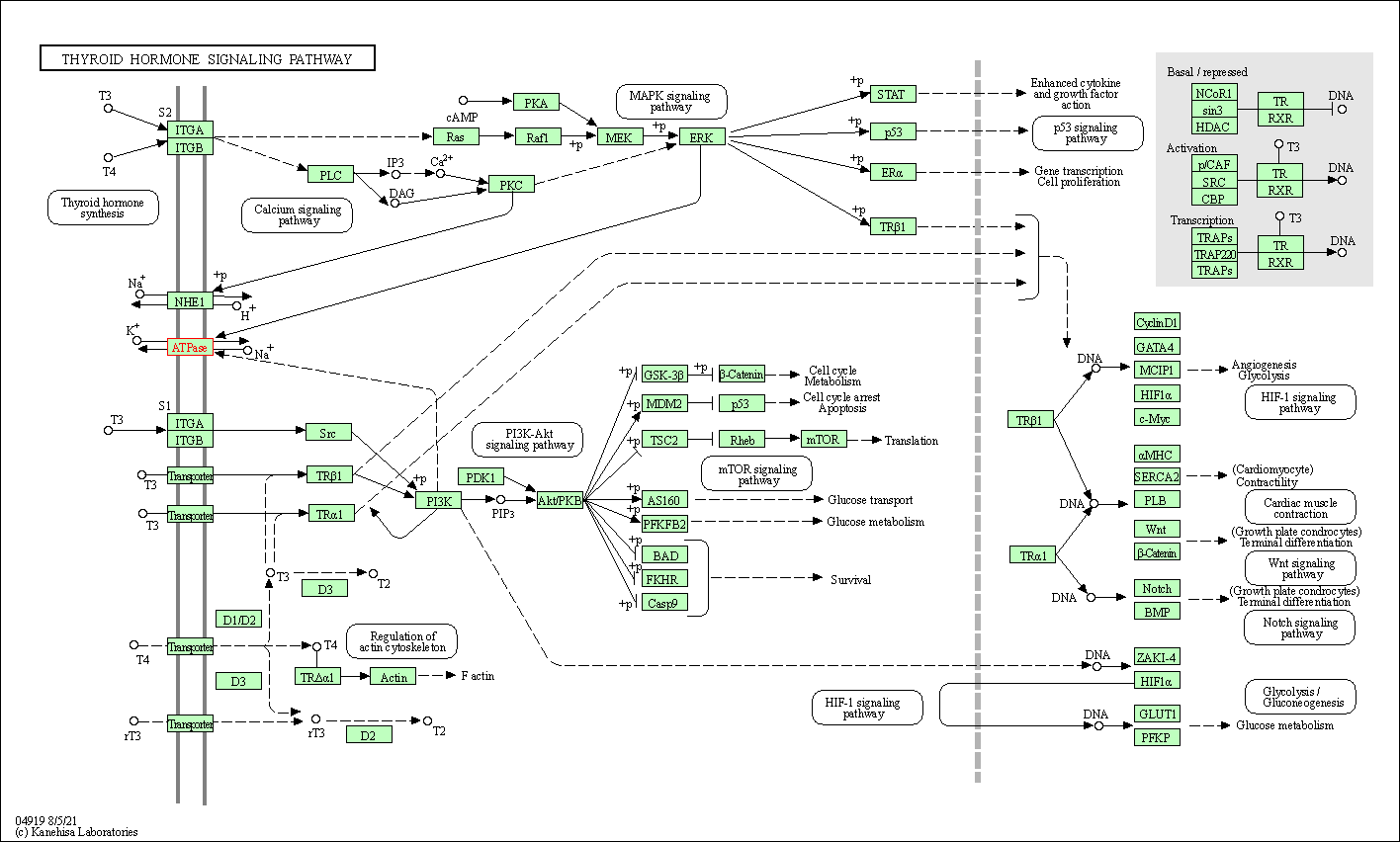
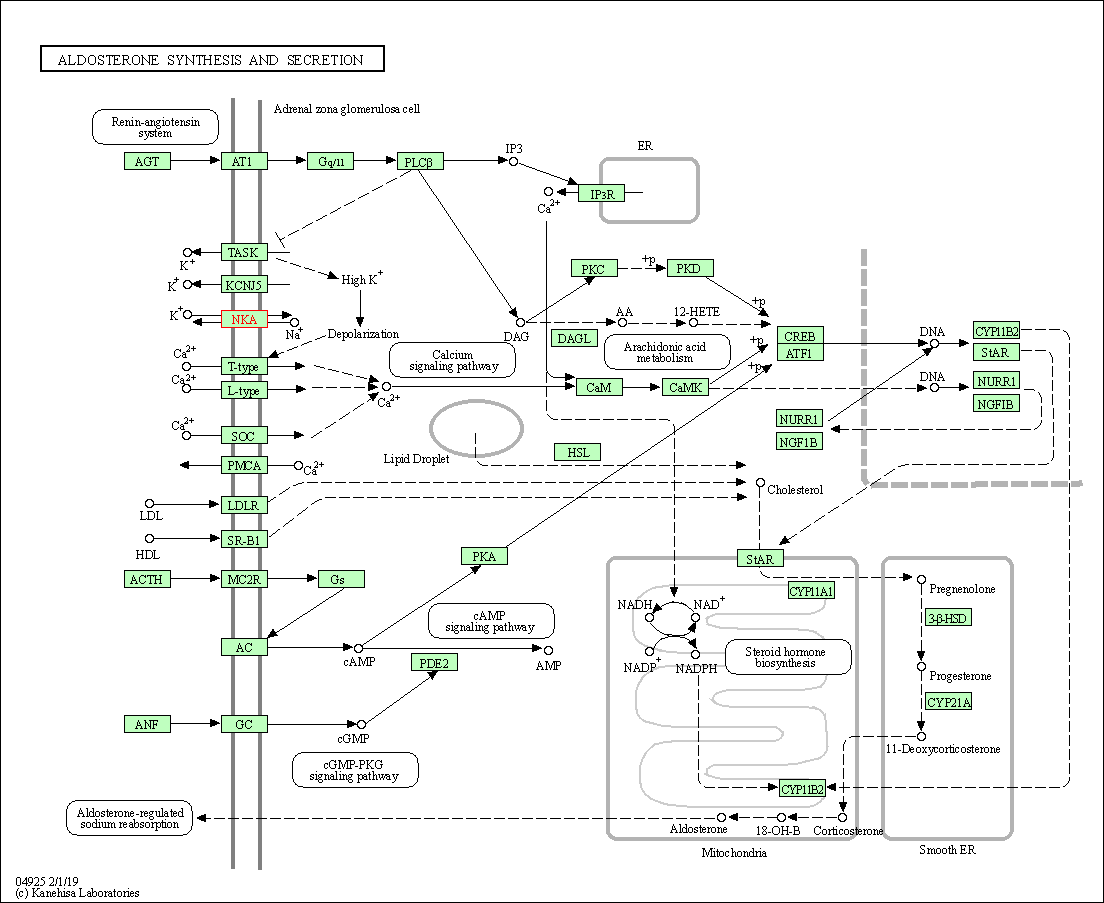
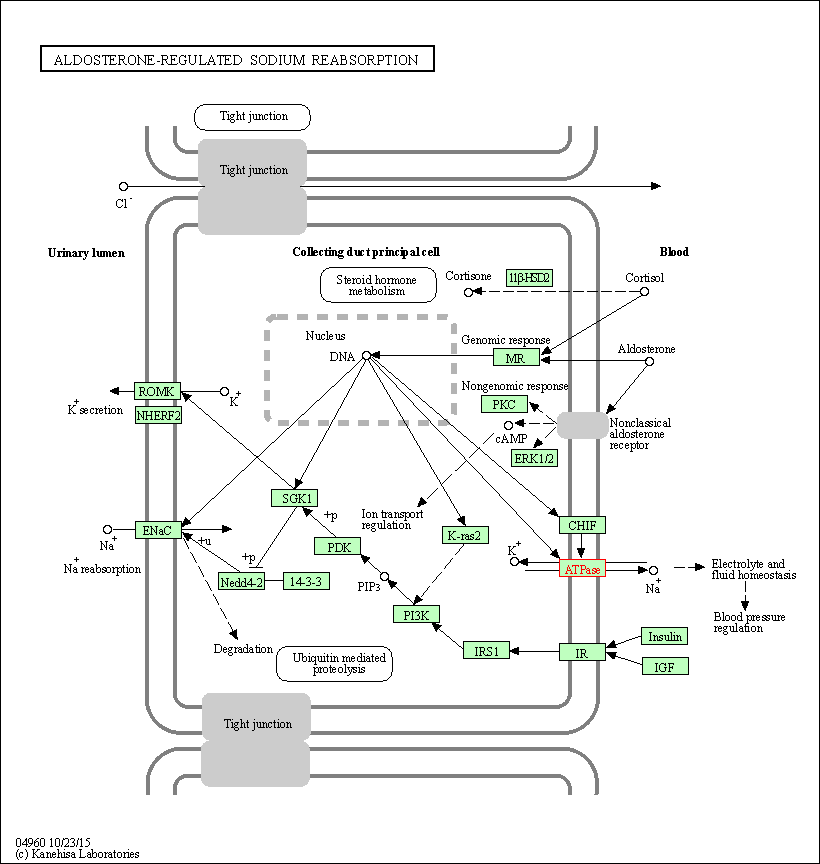
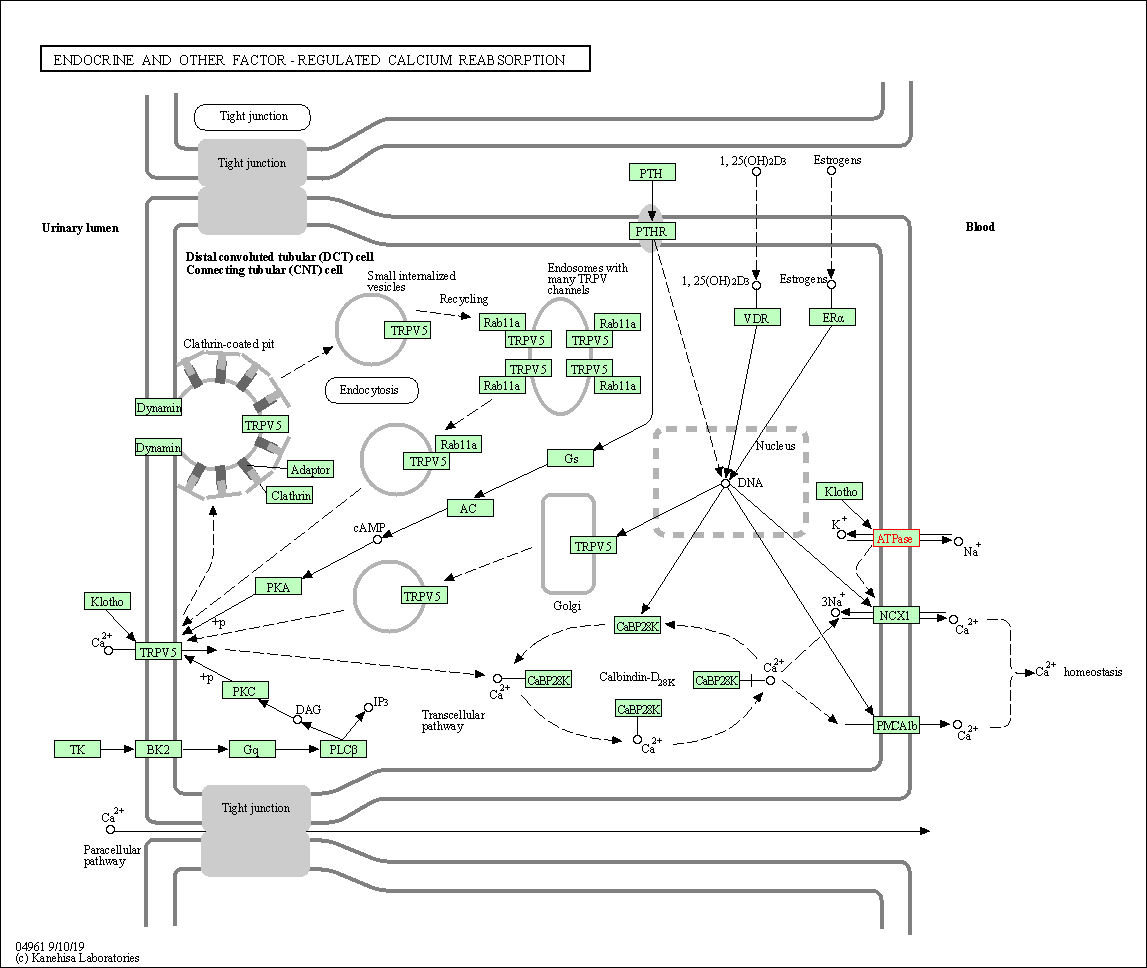
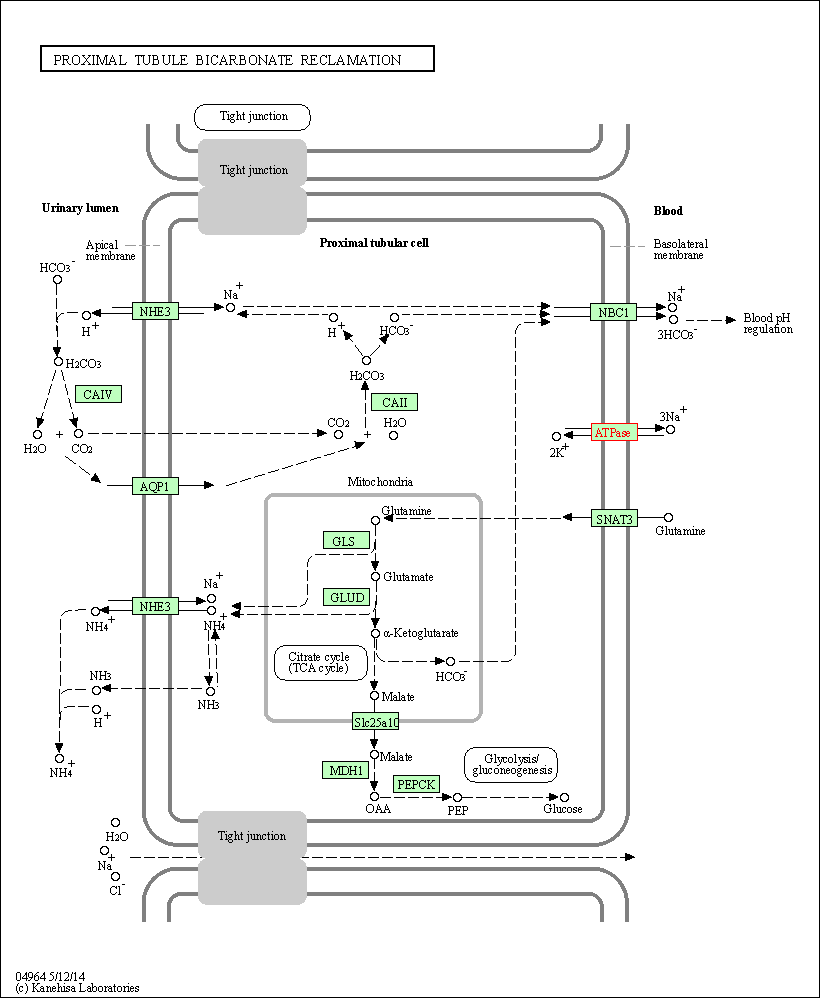
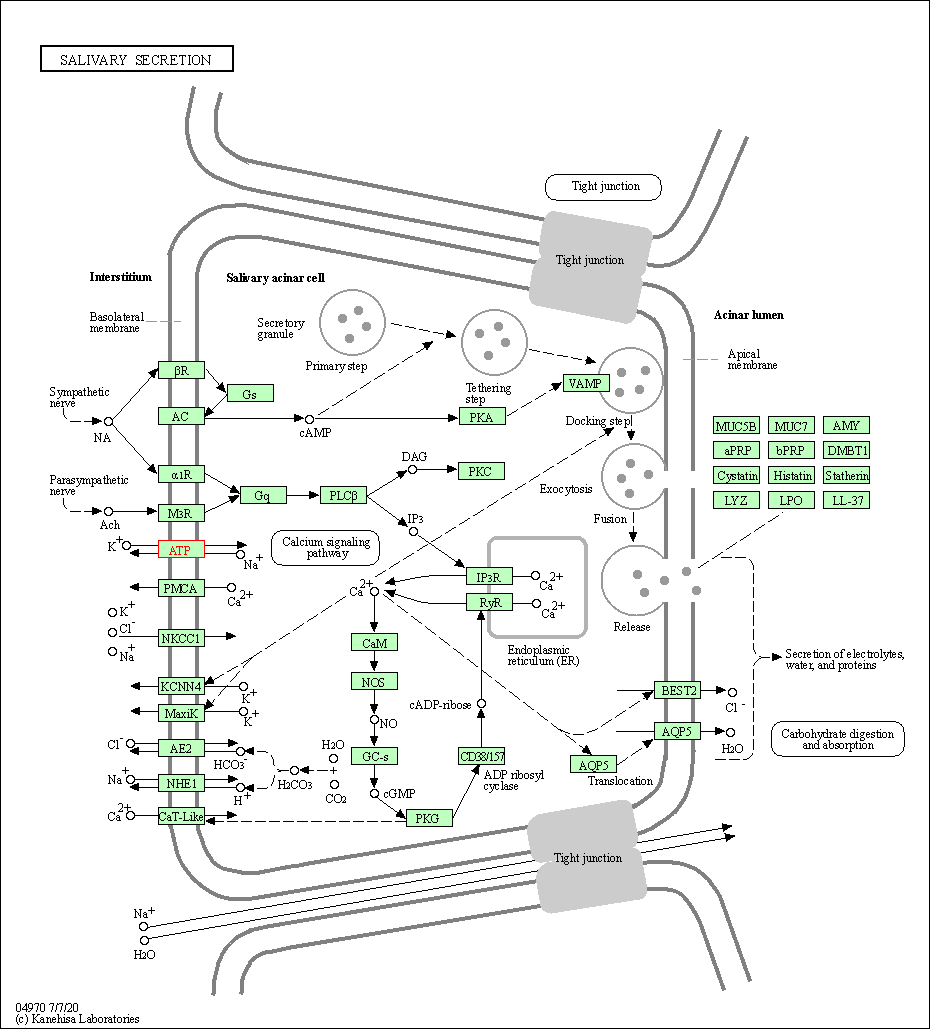
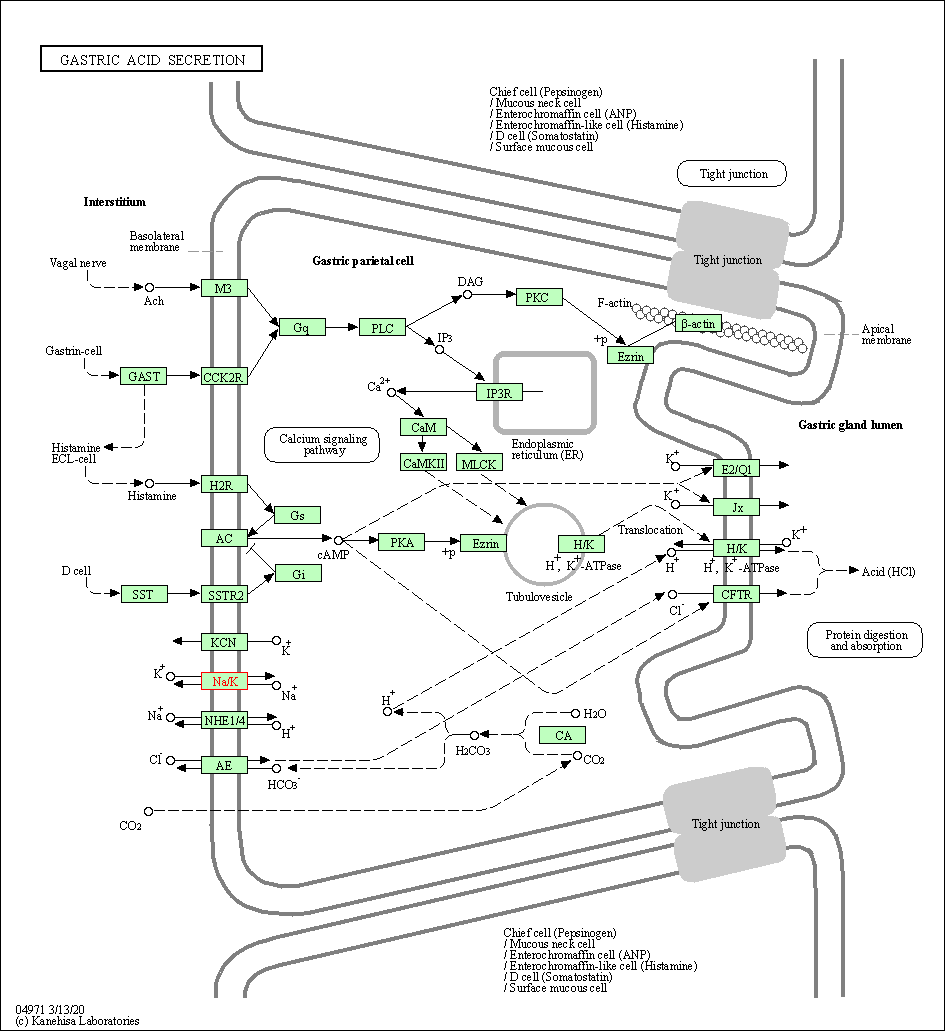
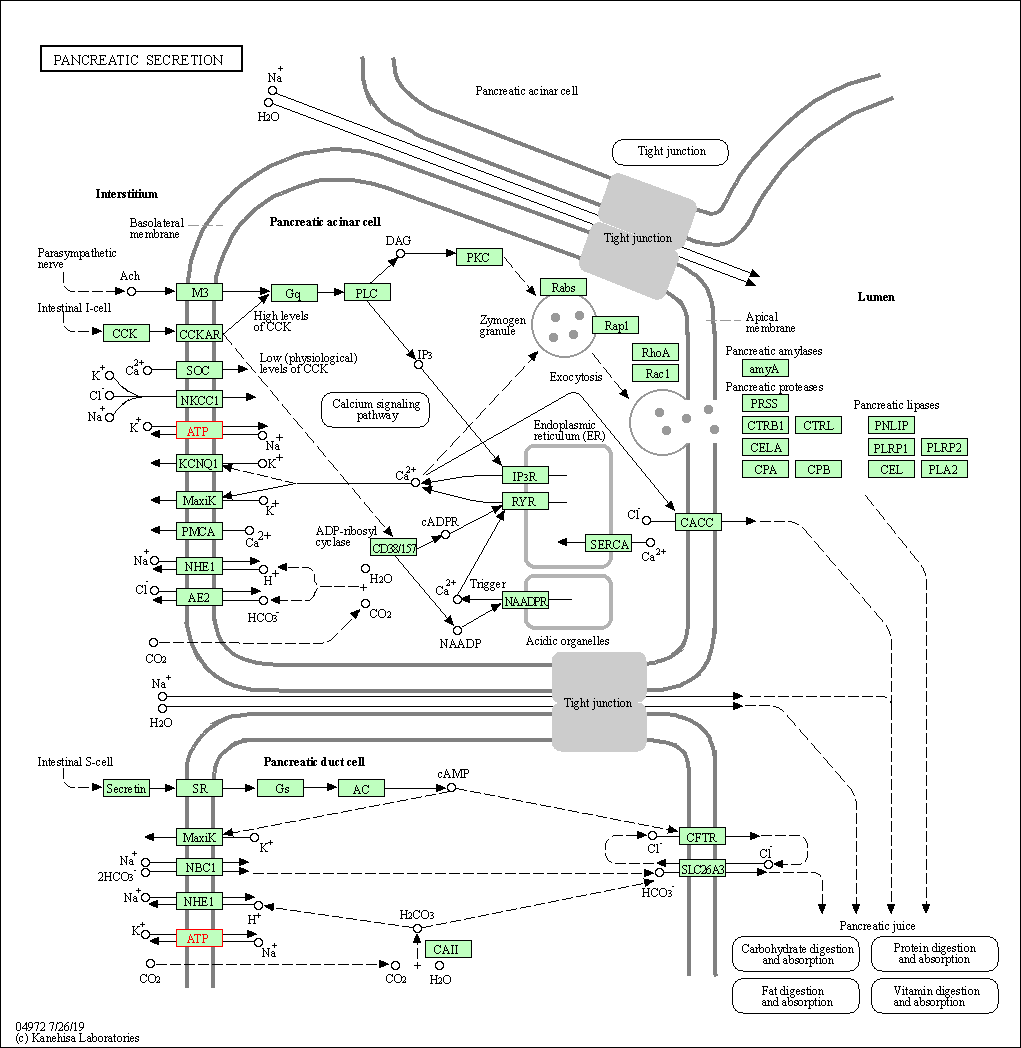


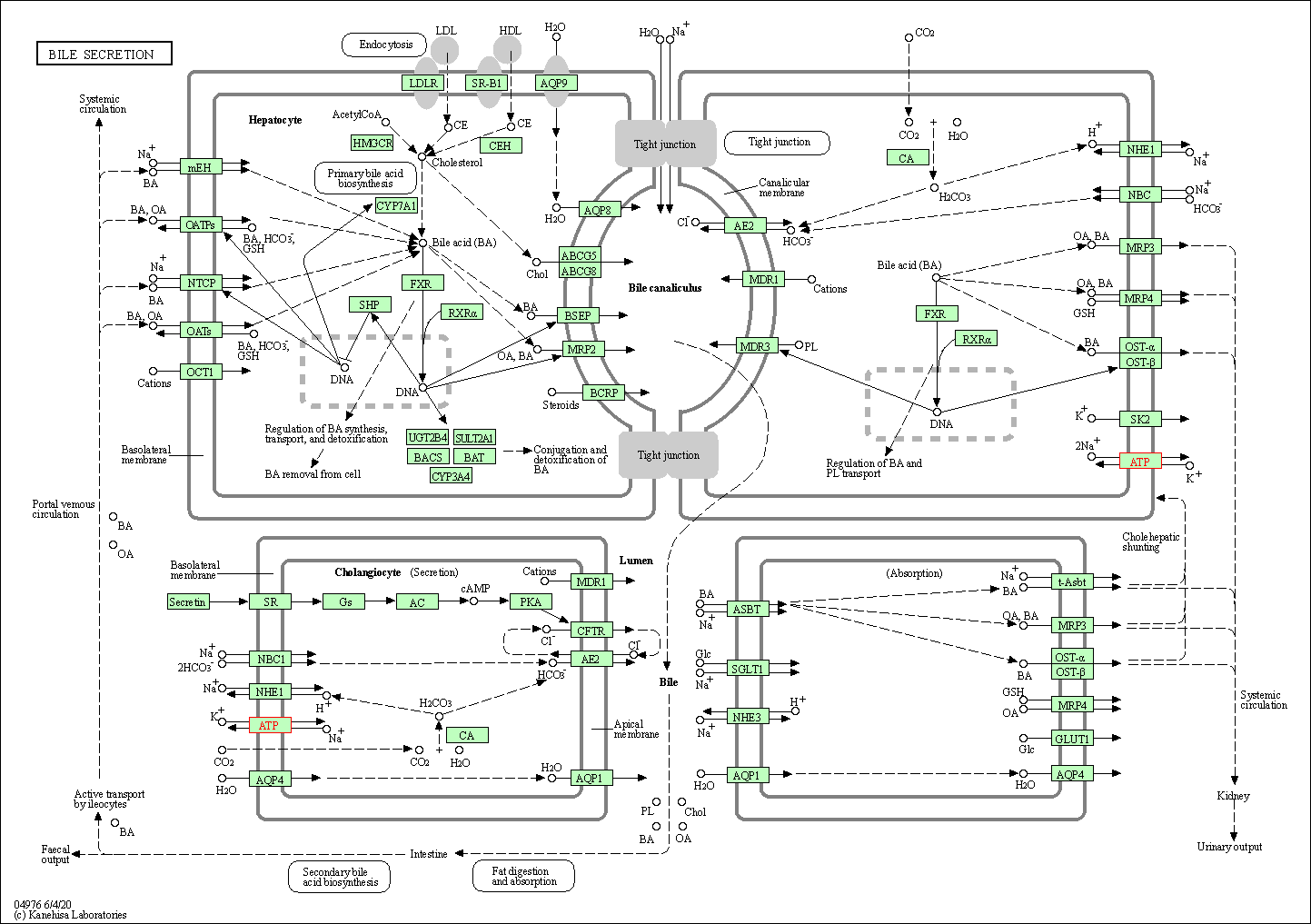
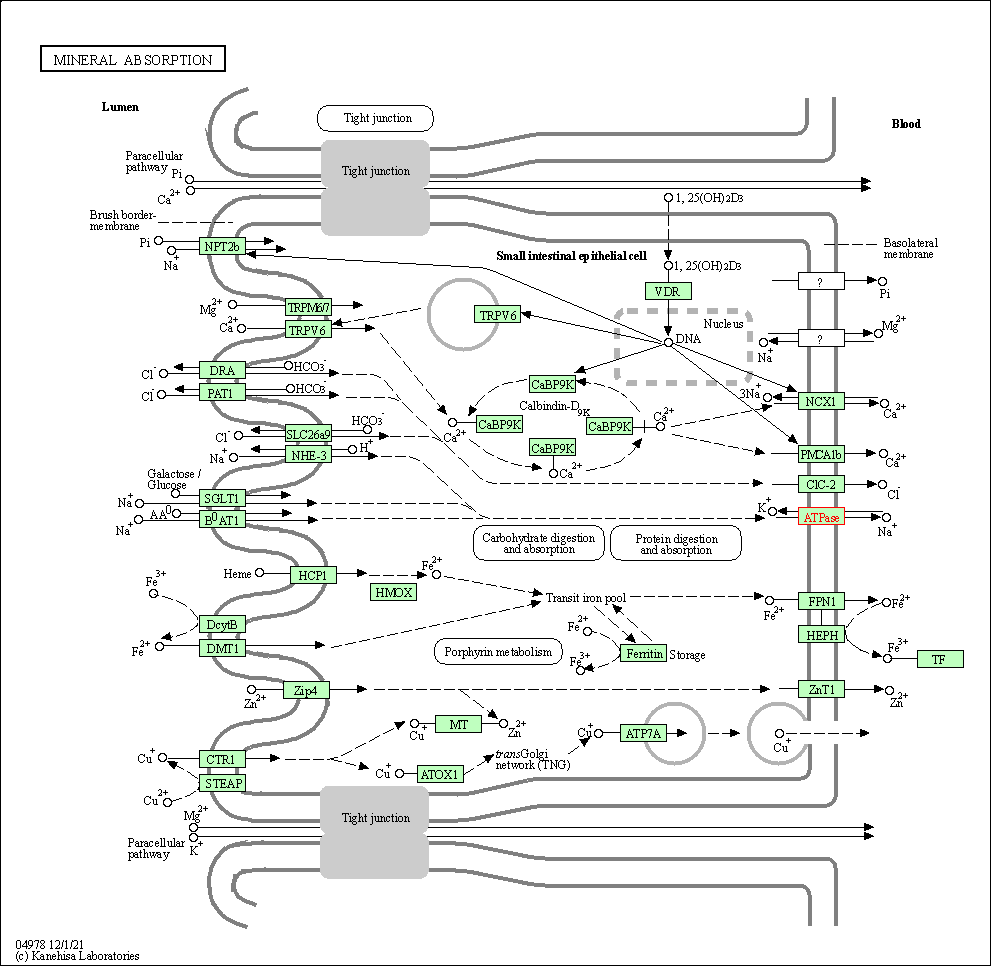
| KEGG Pathway | Pathway ID | Affiliated Target | Pathway Map |
|---|---|---|---|
| cGMP-PKG signaling pathway | hsa04022 | Affiliated Target |

|
| Class: Environmental Information Processing => Signal transduction | Pathway Hierarchy | ||
| cAMP signaling pathway | hsa04024 | Affiliated Target |

|
| Class: Environmental Information Processing => Signal transduction | Pathway Hierarchy | ||
| Cardiac muscle contraction | hsa04260 | Affiliated Target |

|
| Class: Organismal Systems => Circulatory system | Pathway Hierarchy | ||
| Adrenergic signaling in cardiomyocytes | hsa04261 | Affiliated Target |

|
| Class: Organismal Systems => Circulatory system | Pathway Hierarchy | ||
| Insulin secretion | hsa04911 | Affiliated Target |

|
| Class: Organismal Systems => Endocrine system | Pathway Hierarchy | ||
| Thyroid hormone synthesis | hsa04918 | Affiliated Target |

|
| Class: Organismal Systems => Endocrine system | Pathway Hierarchy | ||
| Thyroid hormone signaling pathway | hsa04919 | Affiliated Target |

|
| Class: Organismal Systems => Endocrine system | Pathway Hierarchy | ||
| Aldosterone synthesis and secretion | hsa04925 | Affiliated Target |

|
| Class: Organismal Systems => Endocrine system | Pathway Hierarchy | ||
| Aldosterone-regulated sodium reabsorption | hsa04960 | Affiliated Target |

|
| Class: Organismal Systems => Excretory system | Pathway Hierarchy | ||
| Endocrine and other factor-regulated calcium reabsorption | hsa04961 | Affiliated Target |

|
| Class: Organismal Systems => Excretory system | Pathway Hierarchy | ||
| Proximal tubule bicarbonate reclamation | hsa04964 | Affiliated Target |

|
| Class: Organismal Systems => Excretory system | Pathway Hierarchy | ||
| Salivary secretion | hsa04970 | Affiliated Target |

|
| Class: Organismal Systems => Digestive system | Pathway Hierarchy | ||
| Gastric acid secretion | hsa04971 | Affiliated Target |

|
| Class: Organismal Systems => Digestive system | Pathway Hierarchy | ||
| Pancreatic secretion | hsa04972 | Affiliated Target |

|
| Class: Organismal Systems => Digestive system | Pathway Hierarchy | ||
| Carbohydrate digestion and absorption | hsa04973 | Affiliated Target |

|
| Class: Organismal Systems => Digestive system | Pathway Hierarchy | ||
| Protein digestion and absorption | hsa04974 | Affiliated Target |

|
| Class: Organismal Systems => Digestive system | Pathway Hierarchy | ||
| Bile secretion | hsa04976 | Affiliated Target |

|
| Class: Organismal Systems => Digestive system | Pathway Hierarchy | ||
| Mineral absorption | hsa04978 | Affiliated Target |

|
| Class: Organismal Systems => Digestive system | Pathway Hierarchy | ||
| Click to Show/Hide the Information of Affiliated Human Pathways | |||
| Degree | 3 | Degree centrality | 3.22E-04 | Betweenness centrality | 2.20E-08 |
|---|---|---|---|---|---|
| Closeness centrality | 1.27E-01 | Radiality | 1.09E+01 | Clustering coefficient | 3.33E-01 |
| Neighborhood connectivity | 4.67E+00 | Topological coefficient | 7.22E-01 | Eccentricity | 15 |
| Download | Click to Download the Full PPI Network of This Target | ||||
| Target Regulators | Top | |||||
|---|---|---|---|---|---|---|
| Target-regulating microRNAs | ||||||
| References | Top | |||||
|---|---|---|---|---|---|---|
| REF 1 | Sodium pump isoform expression in heart failure: implication for treatment. Basic Res Cardiol. 2002;97 Suppl 1:I25-30. | |||||
If You Find Any Error in Data or Bug in Web Service, Please Kindly Report It to Dr. Zhou and Dr. Zhang.

